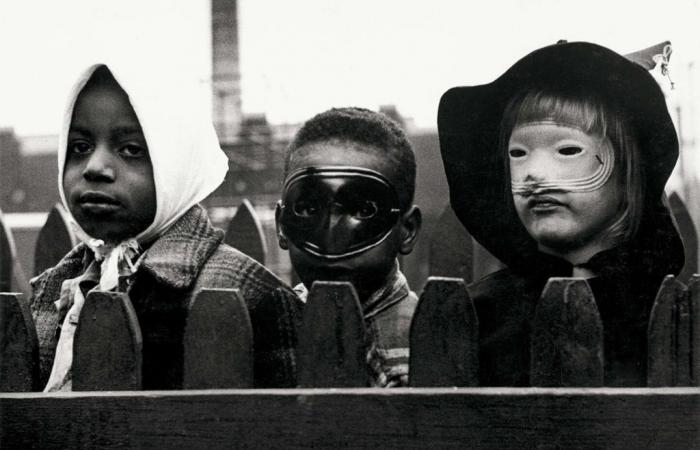Neither truly Japanese nor totally American. It is in the backs and forths and in-betweens that the unparalleled destiny of Yasuhiro Ishimoto (1921-2012) was traced. This photographer with sharp black and white images, who remained little known, was nevertheless a crucial transmitter of modernity in the post-war period. Formal essays and street children of Chicago, radical views of the imperial villa of Kyoto and dreamlike urban visions: an exhibition at BAL, in Paris, « Yasuhiro Ishimoto. Lines and bodies”, accompanied by a magnificent book published by Atelier EXB, reveals his keen eye and the extent of his work, also in balance between several poles: documentary photography, attention to the human and the taste for forms.
Ishimoto’s life was built in a zigzag, in a succession of more or less happy coincidences. Born in San Francisco into a family of Japanese farmers, then raised in Japan, he was sent back to California by his parents at age 18 to study agriculture and escape Japanese military service. But, in 1939, in the United States, Japanese nationals were considered suspect. He was sent to an internment camp in Amache, Colorado, where he remained throughout the war. He then landed unintentionally in Chicago.
The city would prove to be a foundation for him: during his years spent at the Institute of Design, an avant-garde school founded by the Hungarian László Moholy-Nagy and heir to the German Bauhaus, he learned to find his personal visual grammar, to draw its frame and to create compositions from objects, shadows and materials.
The photographer Harry Callahan, who teaches there, also encourages him to leave the studio to confront the discoveries and accidents of life. And it is in this tension between formal experimentation and social vision that Ishimoto will find his style. In his images, bodies lying on the sand, the legs of customers in a store, and African-American children dressed up for Halloween impose a sharp presence thanks to the extreme attention paid to lines, angles, and contrasts.
Fascinated by this austere architecture
But it is in Japan that Ishimoto will leave an indelible mark. When he returned there in 1953, after fourteen years of absence, on a mission for the director of the photography department at MoMA in New York, Edward Steichen, he was no longer familiar with this country. He speaks hesitant Japanese. This distance allows him to take a fresh look at Katsura, the imperial villa in Kyoto, contemporary with the Palace of Versailles.
You have 40.83% of this article left to read. The rest is reserved for subscribers.






